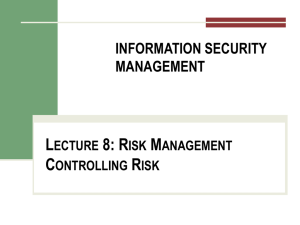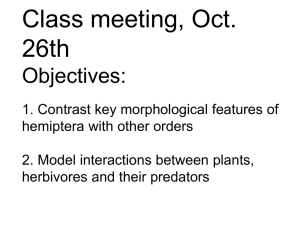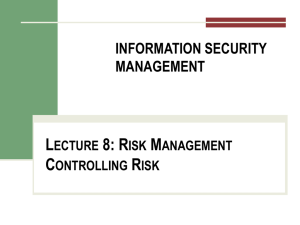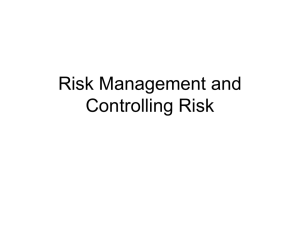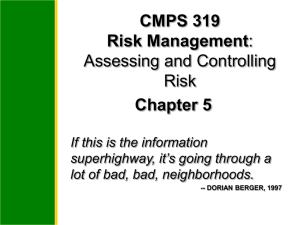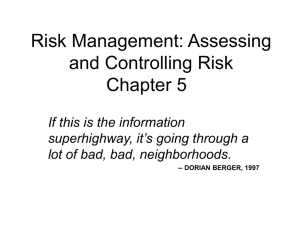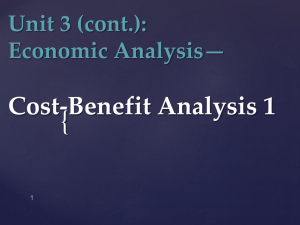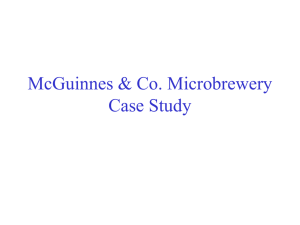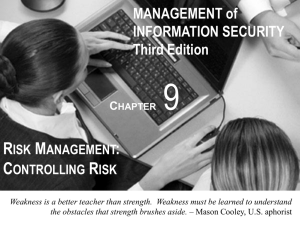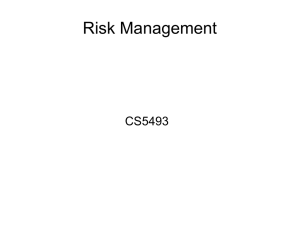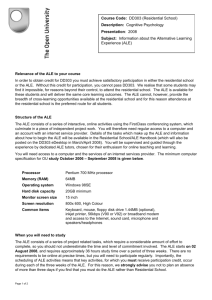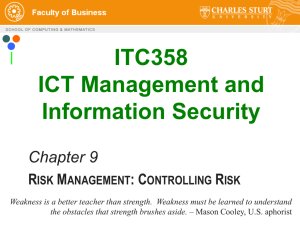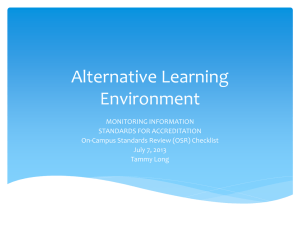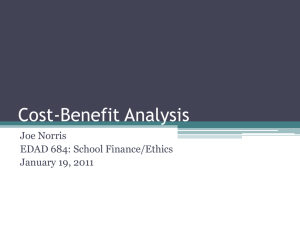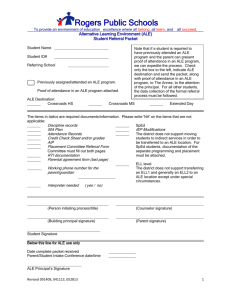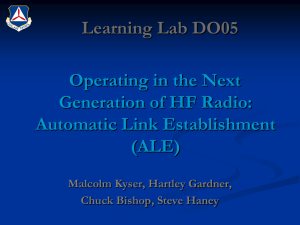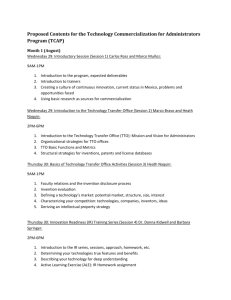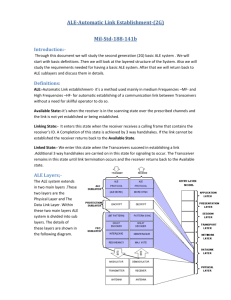Ch 9 - Risk
advertisement
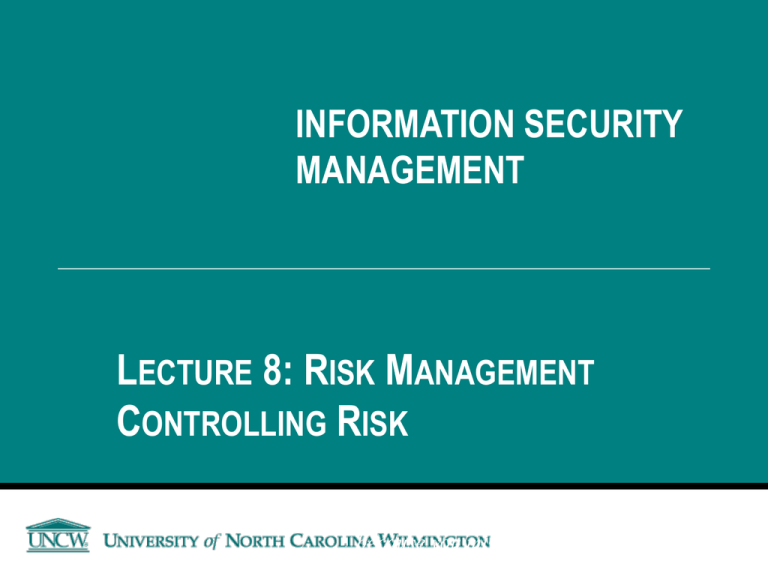
INFORMATION SECURITY MANAGEMENT LECTURE 8: RISK MANAGEMENT CONTROLLING RISK You got to be careful if you don’t know where you’re going, because you might not get there. – Yogi Berra Introduction To keep up with the competition, organizations must design and create a safe environment in which business processes and procedures can function Risk Control Strategies Choose one of four basic strategies: Avoidance Transference Mitigation Acceptance Avoidance The risk control strategy that attempts to prevent the exploitation of the vulnerability • Examples Transference The control approach that attempts to shift the risk to other assets, other processes, or other organizations • Examples Mitigation The control approach that attempts to reduce the damage caused by exploitation of vulnerability • Types of Mitigation Plans Acceptance • Do nothing to protect an information asset – To accept the loss when it occurs Managing Risk • Risk appetite (also known as risk tolerance) Managing Risk – Residual Risk • Residual Risk is a combined function of: – Threats, vulnerabilities and assets, less the effects of the safeguards in place Managing Risk – Residual Risk • Once a control strategy has been selected and implemented: – The effectiveness of controls should be monitored and measured on an ongoing basis (remember our discussion on metrics and baselining) • determines effectiveness and accuracy of the residual risk estimate Managing Risk – Risk Control • Risk control involves selecting one of the four risk control strategies Should the organization ever accept the risk? Risk Acceptance Figure 9-2 Risk-handling action points Source: Course Technology/Cengage Learning Feasibility and Cost-Benefit Analysis • There are a number of ways to determine the advantage or disadvantage of a specific control • The primary means are based on the value of the information assets that it is designed to protect • Economic feasibility – Evaluating the worth of the information assets to be protected and the loss in value if those information assets are compromised Cost-Benefit Analysis: Cost • Factors that affect the cost of a safeguard – Cost of development or acquisition of hardware, software, and services – Training fees – Cost of implementation – Service and maintenance costs Cost-Benefit Analysis: Benefit The value to the organization of using controls to prevent losses associated with a specific vulnerability Cost-Benefit Analysis: Asset Valuation The process of assigning financial value or worth to each information asset Involves estimation of real and perceived costs associated with the design, development, installation, maintenance, protection, recovery, and defense against loss and litigation Cost-Benefit Analysis: Asset Valuation • An organization must be able to place a dollar value on each information asset it owns • Potential loss is that which could occur from the exploitation of vulnerability or a threat occurrence Cost-Benefit Analysis Calculation • CBA determines whether or not a control alternative is worth its associated cost • CBAs may be calculated before a control or safeguard is implemented Or calculated after controls have been implemented and have been functioning for a time Cost-Benefit Analysis Calculation CBA = ALE(prior) – ALE(post) – ACS – ALE (prior to control) is the annualized loss expectancy of the risk before the implementation of the control – ALE (post-control) is the ALE examined after the control has been in place for a period of time – ACS is the annual cost of the safeguard Example of Cost-Benefit Analysis Calculation Dropping an iPad and breaking the screen Asset value: $700 Exposure factor: 50% SLE = ? ARO = 25% chance of damaging ALE (prior) = ? Assume the ARO is reduced to 5% by using control ALE (post) = ? CBA (cost of case = $30) CBA = ALE(prior) – ALE(post) – ACS CBA = ? Example of Cost-Benefit Analysis Calculation Unprotected customer database Asset value: $200,000 Exposure factor: 50% SLE = ? ARO = 75% chance of occurring ALE (prior) = ? Assume the ARO is reduced to 5% by using control ALE (post) = ? CBA (ACS = $5,000) CBA = ALE(prior) – ALE(post) – ACS CBA = ? Other Methods of Establishing Feasibility • • • • Organizational feasibility analysis Operational feasibility Technical feasibility Political feasibility Alternatives to Feasibility Analysis • • • • • • Benchmarking Due care and due diligence Best business practices Gold standard Government recommendations Baseline Risk Management and Employees “Only two things are finite, the universe and human stupidity, and I’m not sure about the former.” - Albert Einstein Types of Employees and Security Knowledge Those who know Those who don’t Those who think they know but don’t
